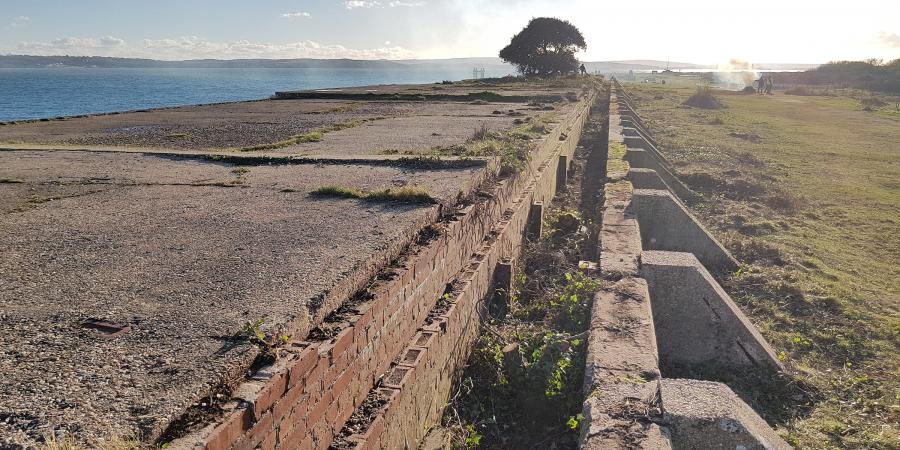To commemorate the 75th anniversary of D-Day, Wessex Archaeology is undertaking a project in partnership with the New Forest National Park Authority to create 3D reconstructions of the D-Day embarkation remains at Lepe County Park.
Our in-house graphics studio and geomatics team are using data relating to the WWII remains on the foreshore at Lepe beach to create digital and physical models of the site, in both its current form and how it would have looked in 1944.

Lepe beach played a major role in D-Day operations, code named Operation Overlord, as the site that troops, vehicles and supplies embarked from, bound for the beaches of Normandy on 6 June 1944. Today, many of the structures, including:
- The concrete road used for the embarkation (blocks for this were brought by horse and cart)
- Concrete floors which are the remains of site workers construction buildings
- Water tower base for purification, as there was a shortage of local available water
- Construction platforms, where the Mulberry Harbours or Caissons were built
- Beach hardening mats, which were held in place by hooks, and allowed heavy tanks to safely load onto the landing crafts
- "Dolphins" - part of the pierhead used to load the ships
- Bollards used to tie up the ships
- Eight concrete slipways for the rolling track walls to launch the Mulberry Harbours into the sea at high tide
- Winching gear bases used to winch the Mulberry Harbours
- Trigger release gear site, which held the Mulberry Harbours in place until they were launched
- Rolling track walls - the Mulberry Harbours, once complete, were rolled along the walls to be launched


These nationally significant structures are being increasingly lost due to coastal erosion, and Wessex Archaeology’s work will create both digital and physical 3D models of the site. The digital models will be uploaded onto www.wessexarch.co.uk/our-work/lepe-d-day as they are created, while the 3D prints will be on display to the public at Lepe Country Park.

